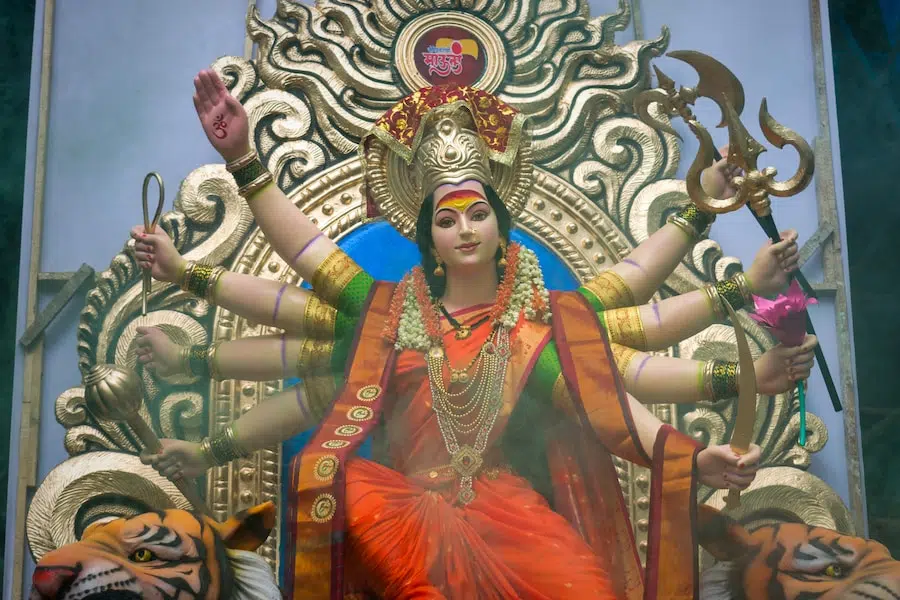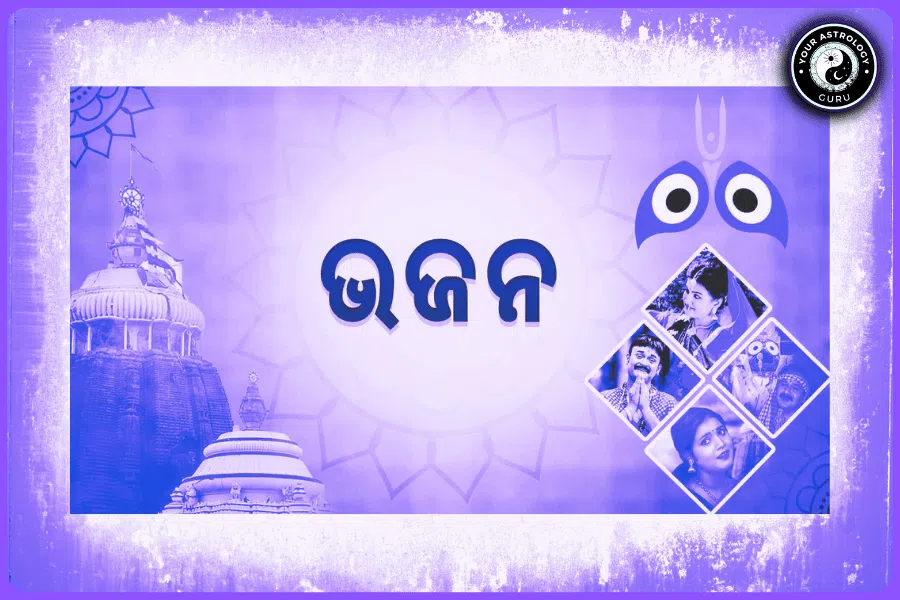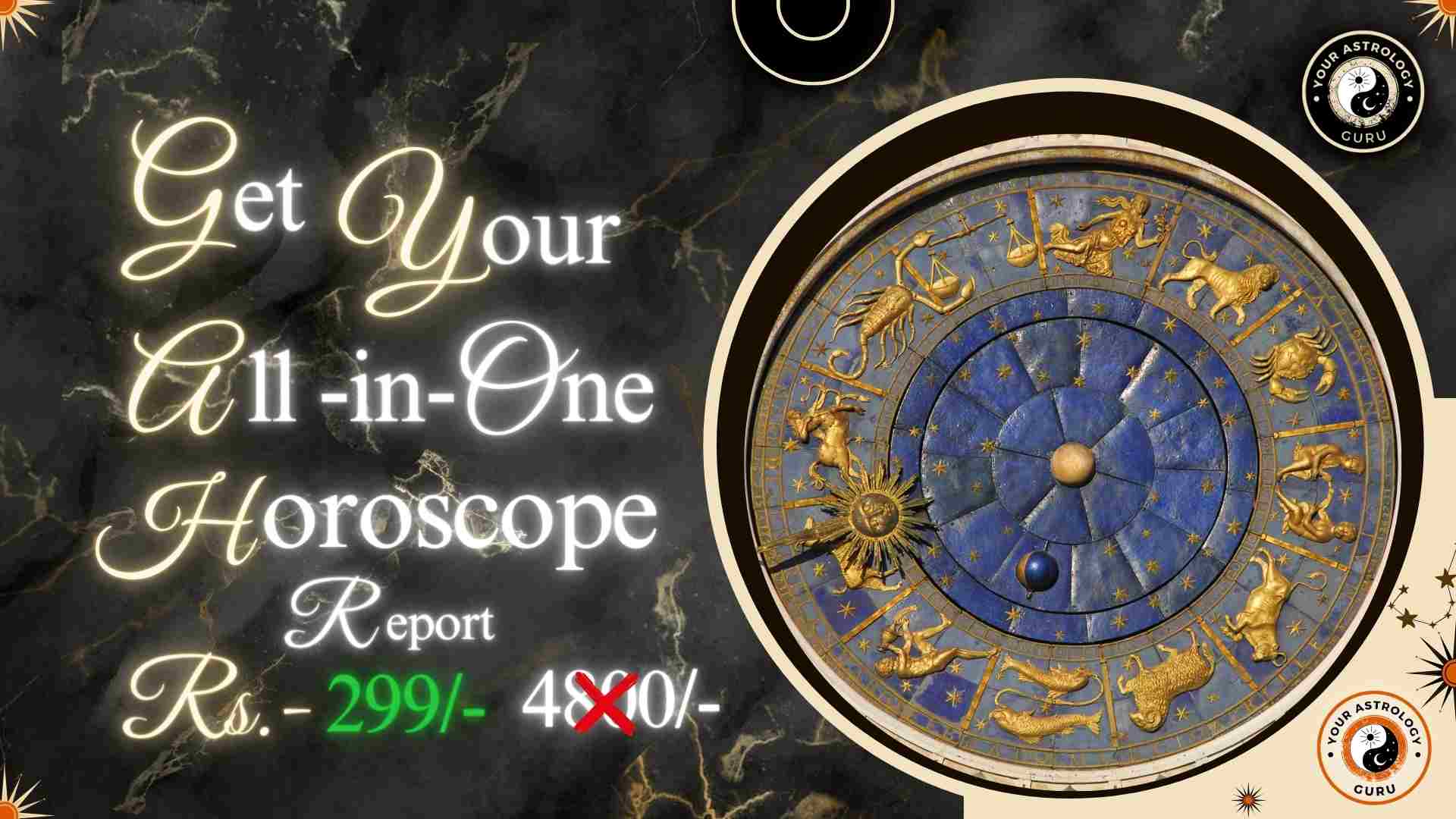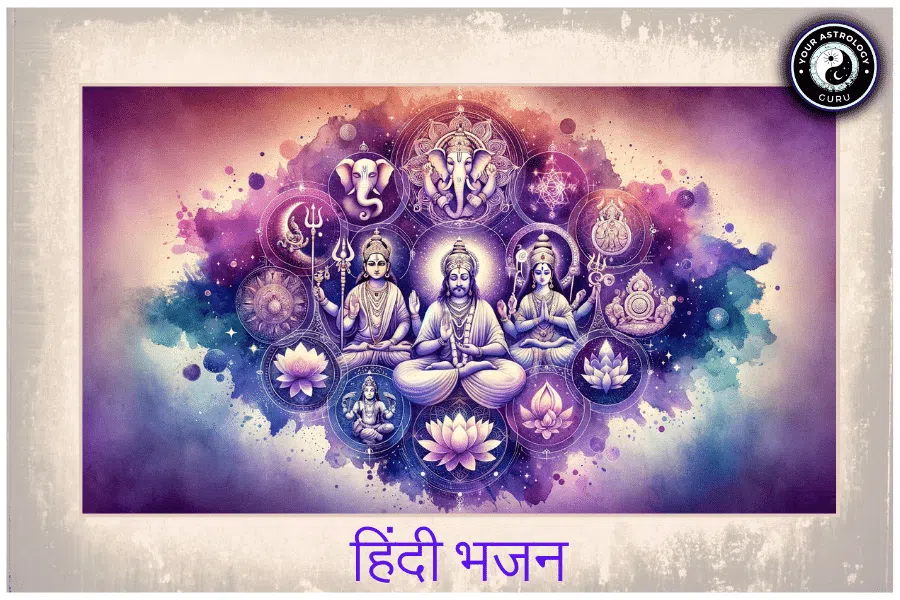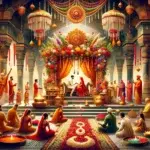Hinduism is one of the oldest religions in the world, with a rich and diverse set of beliefs and practices. It is a complex and multifaceted religion that encompasses a wide range of traditions, rituals, and philosophies. At the core of Hinduism is the belief in the eternal soul, or Atman, and the concept of reincarnation, or the cycle of birth and death. Hindu cosmology plays a crucial role in understanding the universe and our place in it. One of the important texts in Hindu cosmology is the Brahmand Puran, which provides insights into the creation of the universe and the various realms of existence.
The Brahmand Puran is one of the eighteen Mahapuranas, which are ancient Hindu texts that contain myths, legends, and genealogies of gods, goddesses, and sages. The word “Brahmand” means “the egg of Brahma,” referring to the cosmic egg from which the universe is believed to have originated. The Brahmand Puran is considered to be a significant text in Hindu cosmology as it provides a detailed account of the creation of the universe and the various realms of existence.
Table of Contents
The Creation Story
According to the Brahmand Puran, the universe came into being through a process known as “Srishti,” which means creation. The story begins with Lord Brahma, who is considered to be the creator god in Hinduism. Lord Brahma is depicted as having four heads, representing his vast knowledge and wisdom. He is often depicted sitting on a lotus flower emerging from Lord Vishnu’s navel.
Lord Brahma creates the universe by first creating himself as a lotus flower. From his navel emerges Lord Vishnu, who lies on a serpent called Shesha-Naga. Lord Vishnu then creates Lord Shiva, who is responsible for destruction and transformation. Together, these three gods form the Trimurti, the three main gods in Hinduism.
The Three Lokas
The Brahmand Puran describes the universe as consisting of three realms of existence, known as Lokas. The first realm is Bhuloka, which is the earthly realm where humans reside. It is believed to be the physical world that we experience through our senses. Bhuloka is further divided into seven regions or continents, each ruled by a different deity.
The second realm is Bhuvarloka, which is the realm of celestial beings and demigods. It is believed to be a higher plane of existence, where beings enjoy a more refined and blissful existence compared to humans. Bhuvarloka is said to be populated by various celestial beings, such as Gandharvas (celestial musicians), Apsaras (celestial dancers), and Yakshas (nature spirits).
The third realm is Swargaloka, which is the highest realm in Hindu cosmology. It is the abode of the Devas, or gods and goddesses. Swargaloka is described as a heavenly realm filled with divine beauty and bliss. It is believed to be a place of eternal happiness and joy.
The Role of the Trimurti
The Trimurti, consisting of Brahma, Vishnu, and Shiva, plays a crucial role in Hindu cosmology. Each god has a specific role in the creation, preservation, and destruction of the universe.
Lord Brahma is considered to be the creator god. He is responsible for creating the universe and all living beings. Lord Brahma is often depicted with four heads, representing his vast knowledge and wisdom. He is also depicted holding a book, symbolizing his role as the source of all knowledge.
Lord Vishnu is considered to be the preserver god. He is responsible for maintaining order and balance in the universe. Lord Vishnu is believed to have taken various incarnations, or avatars, to protect the world from evil forces and restore righteousness.
Lord Shiva is considered to be the destroyer god. He is responsible for the destruction and transformation of the universe. Lord Shiva is often depicted as a yogi meditating in the Himalayas, surrounded by his consort, Parvati, and his sons, Ganesha and Kartikeya.
The Importance of Karma
Karma is a fundamental concept in Hinduism that refers to the law of cause and effect. It is believed that every action has consequences, and these consequences determine one’s future experiences and rebirths. Good actions lead to positive consequences, while bad actions lead to negative consequences.
According to Hindu cosmology, karma is not limited to a single lifetime but extends across multiple lifetimes. It is believed that one’s actions in previous lives determine their current circumstances and future rebirths. The goal of life is to accumulate good karma and break free from the cycle of birth and death.
Karma is seen as a moral law that governs the universe. It is believed that one’s actions create an energy that affects not only oneself but also the world around them. By understanding the law of karma and living in accordance with it, individuals can create positive change in their lives and contribute to the well-being of others.
The Four Yugas
The Brahmand Puran describes the concept of the four yugas, or cycles of time. Each yuga represents a different age in human history, characterized by specific qualities and characteristics.
The first yuga is Satya Yuga, also known as the Golden Age. It is believed to be an age of truth, righteousness, and spiritual enlightenment. People in Satya Yuga are said to possess great virtues and live in harmony with nature.
The second yuga is Treta Yuga, also known as the Silver Age. It is believed to be an age of sacrifice and religious rituals. People in Treta Yuga are said to be more focused on material gains and external rituals.
The third yuga is Dvapara Yuga, also known as the Bronze Age. It is believed to be an age of decline and moral degradation. People in Dvapara Yuga are said to be more focused on material desires and selfishness.
The fourth yuga is Kali Yuga, also known as the Iron Age. It is believed to be the current age we are living in. Kali Yuga is characterized by spiritual ignorance, moral decay, and widespread suffering. However, it is also believed that Kali Yuga offers the greatest opportunity for spiritual growth and liberation.
The Celestial Beings
In Hindu mythology, there are two main groups of celestial beings: the Devas and the Asuras. The Devas are considered to be divine beings associated with light, goodness, and righteousness. They are often depicted as gods and goddesses who reside in Swargaloka.
The Asuras, on the other hand, are considered to be demonic beings associated with darkness, evil, and ignorance. They are often depicted as demons or evil spirits who oppose the Devas and seek to disrupt the cosmic order.
The Devas and Asuras are believed to be engaged in an eternal struggle for power and control. This struggle represents the ongoing battle between good and evil in the universe. Humans are seen as participants in this cosmic struggle, with the ability to align themselves with either the Devas or the Asuras through their thoughts, words, and actions.
The Importance of Dharma
Dharma is a central concept in Hinduism that refers to one’s duty or moral responsibility. It is believed that each individual has a unique dharma based on their caste, gender, and stage of life. Dharma provides a framework for living a righteous and virtuous life.
Living in accordance with dharma means fulfilling one’s duties and responsibilities in a way that is ethical and just. It involves acting with integrity, honesty, and compassion towards oneself and others. By following dharma, individuals can live in harmony with the universe and contribute to the well-being of society.
Dharma is seen as a guiding principle that helps individuals navigate the complexities of life and make ethical decisions. It provides a moral compass that helps individuals distinguish between right and wrong, good and evil. By following dharma, individuals can cultivate virtues such as self-discipline, humility, and gratitude.
The Concept of Moksha
Moksha is the ultimate goal of Hinduism, representing liberation from the cycle of birth and death. It is believed that through spiritual practice and self-realization, individuals can break free from the cycle of reincarnation and attain union with the divine.
Moksha is seen as a state of eternal bliss and enlightenment, where one realizes their true nature as the eternal soul or Atman. It is believed that in this state, one is free from suffering, desire, and attachment.
There are different paths to achieving moksha in Hinduism. The path of knowledge (Jnana Yoga) involves self-inquiry and the realization of one’s true nature as the eternal soul. The path of devotion (Bhakti Yoga) involves surrendering oneself to a higher power through prayer, worship, and devotion. The path of action (Karma Yoga) involves selfless service and performing one’s duties without attachment to the results.
The Significance of Sacred Texts
Sacred texts play a crucial role in Hindu cosmology as they provide guidance and wisdom for understanding the universe and our place in it. The Vedas are considered to be the oldest sacred texts in Hinduism and are believed to contain the eternal truths revealed by the gods.
The Upanishads are philosophical texts that explore the nature of reality and the self. They provide insights into the nature of the universe and the ultimate goal of life, which is liberation from the cycle of birth and death.
The Bhagavad Gita is a sacred text that contains a conversation between Lord Krishna and the warrior Arjuna. It provides guidance on how to live a righteous life and fulfill one’s duties without attachment to the results.
Practical Applications
Hindu cosmology offers practical guidance for living a meaningful and fulfilling life. By incorporating concepts such as dharma, karma, and moksha into daily life, individuals can cultivate virtues such as compassion, self-discipline, and gratitude.
Living in accordance with dharma means fulfilling one’s duties and responsibilities in a way that is ethical and just. It involves acting with integrity, honesty, and compassion towards oneself and others. By following dharma, individuals can create positive change in their lives and contribute to the well-being of society.
Practicing karma involves being mindful of one’s actions and their consequences. It means taking responsibility for one’s choices and striving to act in ways that are beneficial to oneself and others. By cultivating positive karma, individuals can create a more harmonious and balanced life.
The ultimate goal of Hinduism is moksha, or liberation from the cycle of birth and death. This can be achieved through spiritual practice, self-inquiry, and self-realization. By seeking knowledge, cultivating devotion, and performing selfless service, individuals can progress on the path towards moksha.
Hindu cosmology provides a comprehensive framework for understanding the universe and our place in it. The Brahmand Puran offers insights into the creation of the universe, the various realms of existence, and the roles of gods and celestial beings. Concepts such as karma, dharma, and moksha provide practical guidance for living a meaningful and fulfilling life.
By incorporating Hindu cosmology into daily life, individuals can cultivate virtues such as compassion, self-discipline, and gratitude. They can create positive change in their lives and contribute to the well-being of society. Ultimately, Hindu cosmology offers a profound understanding of the universe and our place in it, leading to a deeper sense of purpose and fulfillment.





